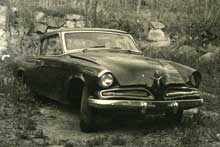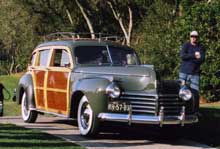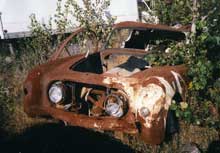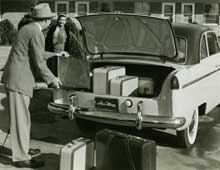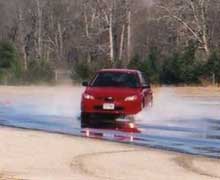Studie Studies
"Do you still drive a Studebaker?" On the rare occasions when I'm in touch with college classmates this question often comes up. It shouldn't surprise me, I suppose, because my undergraduate years, 1962-66, are what I call my "Studebaker period."
It started by happenstance. I was dating the daughter of a Ford dealer, and was eager to pass the family Nash Rambler down to my sister. My girlfriend's father had taken a '57 Ford Ranch Wagon in trade, which appealed to me, but it was sold before I could put in my bid. The next car in my price range was a '57 Studebaker that had belonged to the local deputy sherrif. I handed over $300 and it was mine, with 30,000 miles, believed correct, on the clock.
It was what we call a "stripper," the bottom-feeder model with rubber window moldings and virtually no trim. It didn't even have a passenger sun visor. Studebaker pretentiously called it "Custom Commander" (the upmarket model being, curiously, "DeLuxe"), but it had the virtue of being the lightest V8 sedan of its model year, which meant that it could win stoplight drags, or, at the very least, burn lots of rubber. While no stylistic icon, its basic body dating from 1953, it looked far better, particularly in top-line President trim, than the rather grotesque 1958 facelift.
During the summer of 1964 I noticed a '53 "Loewy coupe" at my local garage (that's not Raymond Loewy in the photo, it's Studebaker president Harold Vance). The car had been in an accident, and the engine and transmission had been removed. The garage owner was happy to tow the carcase to my house - gratis. I spent that summer and the next working evenings in a paper mill and restoring the car during the day.
I briefly entertained thoughts of building a Studillac, but found a "Sweepstakes 259" engine in a local junkyard, the "power-pack" version with a Carter WCFB four-barrel, removed from a '56 Commander sedan. I bought two parts cars, one with an overdrive transmission, the other with straight sheet metal to replace the damaged panels on my car. I acquired a second-hand Hurst shifter, made brackets to adapt it to the Studie transmission and ordered a dual exhaust kit from the Montgomery Ward catalog. The car was on the road in time to take me back to campus for my senior year in September 1965 (and my sister took over the '57).
It was not the sought-after pillarless Starliner hardtop, instead the "post" Commander Regal Starlight coupe. What it lacked in style was made up in sturdiness - the Starliners had a reputation for rattles. With a 185-hp engine and a wealth of ratios, thanks to the overdrive, it would not only win stoplight drags but also achieve 25 mpg on the highway. The pot metal trim was pitted, so I took most of it off and filled the holes. It gave the car a cleaner appearance, at a cost of losing the rare "inverted Mercedes" emblems from early 1953 production.
Alas, all things end and so did my Studebaker period. Once I had graduated and earned some money I lusted for something more modern, sportier. Eschewing a new car and payments, I bought a used Austin-Healey Sprite. I sold the Studie to a middle-aged woman, a writer who thought it looked "Italian." She promptly wrecked it.

